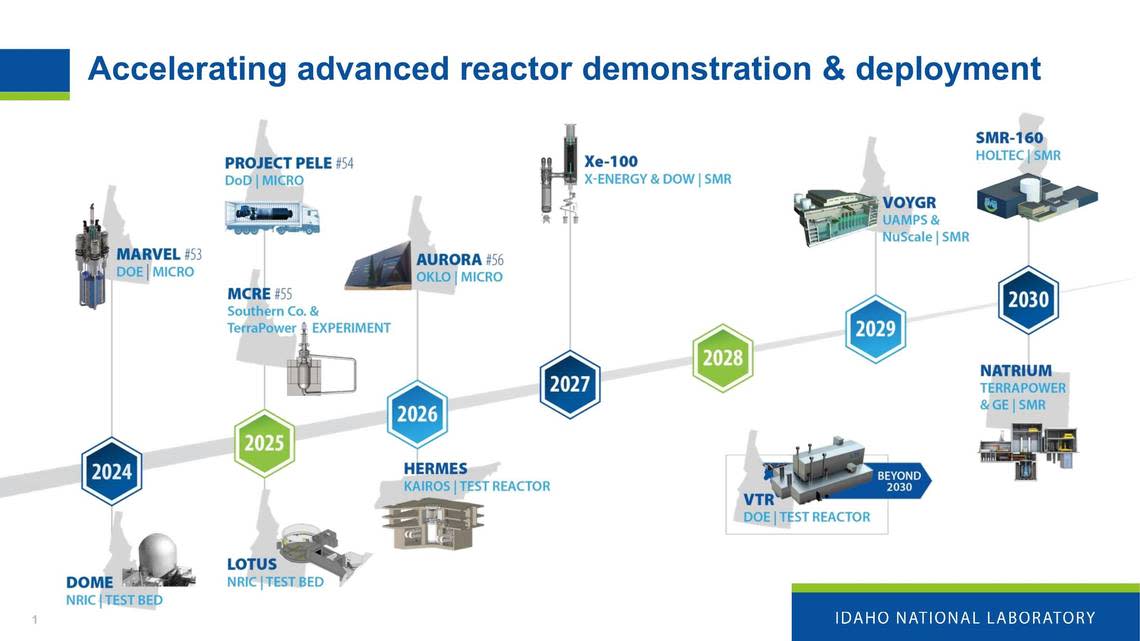Idaho is home to great nuclear achievements and the deadliest disaster in U.S. history
While New Mexico may get all the attention for its role in the Manhattan Project, Idaho arguably could be called the state with the most significant nuclear history.
In its brightest moments, it has led the way in harnessing nuclear as a renewable energy source.
In its darkest, it has been the site of what is considered the deadliest nuclear accident in American history.

The Atomic Energy Commission announced on Feb. 18, 1949, that it had selected Idaho as the site for the National Reactor Testing Station — known today as the Idaho National Laboratory — 35 miles west of Idaho Falls, where it planned to spend $500 million on reactors, research facilities and other projects, according to previous Idaho Statesman reporting.
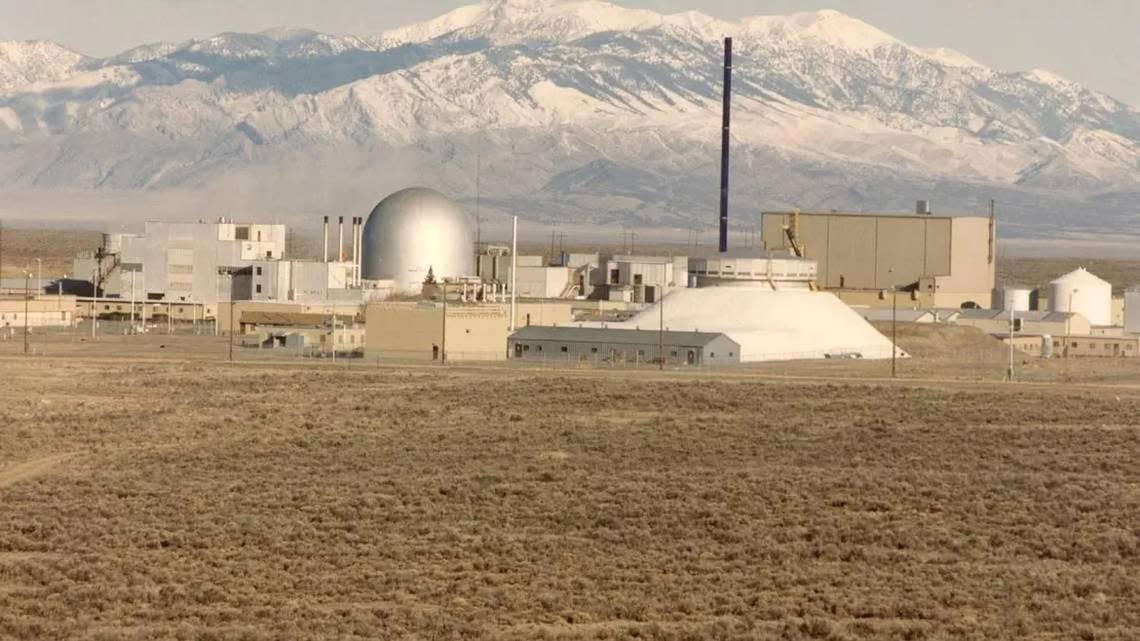
The research paid off in 1951 when Idaho’s Experimental Breeder Reactor I in Arco made history by powering on four light bulbs. The next day, it generated enough energy to light the entire building and parking lot.
An astounded Soviet Union refused to believe the incredible claim and declared the United States to be lying about it at a United Nations conference, according to the Idaho National Laboratory.
“Although this mere 400 kilowatts of power seems small by today’s standards, it was absolutely monumental in the context of 1951,” the Idaho National Laboratory’s website states. “This was the first time a usable amount of electricity had been generated using nuclear technology, and it paved the way for an energy source of the future.”

The achievement — proving that nuclear could be used as a practical power source — was so momentous that President Lyndon B. Johnson designated the reactor as a National Historic Landmark in 1966. You can still visit the decommissioned reactor today at the laboratory’s museum.
Idaho scientists made history again in 1955 when they lit the entire town of Arco using nuclear energy. The short-lived event lasted for just an hour in the dead of night, but even today, a sign above city hall still brags that Arco was “the first city in the world to be lit by atomic power.”
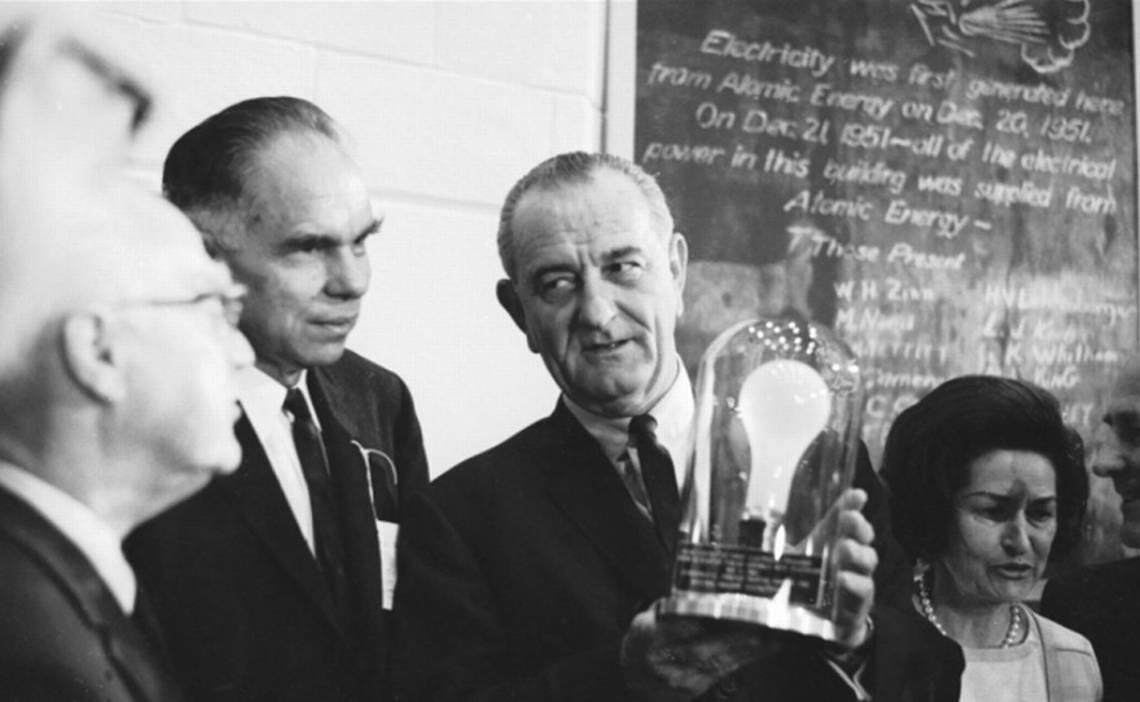
Idaho gets country’s first-of-its-kind nuclear fallout shelter
Many saw nuclear as the gateway to an exciting future. But as America carried memories of the atomic bombings of Japan and fears of a Cold War attack, others worried nuclear advancement would lead to disaster.
The U.S. Office of Civil and Defense Mobilization chose Boise as the site of the country’s first community nuclear fallout shelter in 1960, which would serve as a prototype for future civil defense shelters across the United States, a Statesman article reported at the time. The Statesman attributed the choice to a “handful of young fathers in Highlands (who) began pestering” the federal government. They worried the Idaho Falls laboratory and the Mountain Home Air Force Base could make Idaho an enemy target.
The two-story Boise Bomb Shelter, which can still be found at 600 W. Curling Drive, was built partly through a $122,000 grant (nearly $1.3 million today) from the Federal Civil Defense Agency. Made with steel-reinforced concrete, it included a laundry room, speaker system, air filtration systems, a diesel generator, kitchen, dormitories and decontamination showers, according to the Idaho Architecture Project.
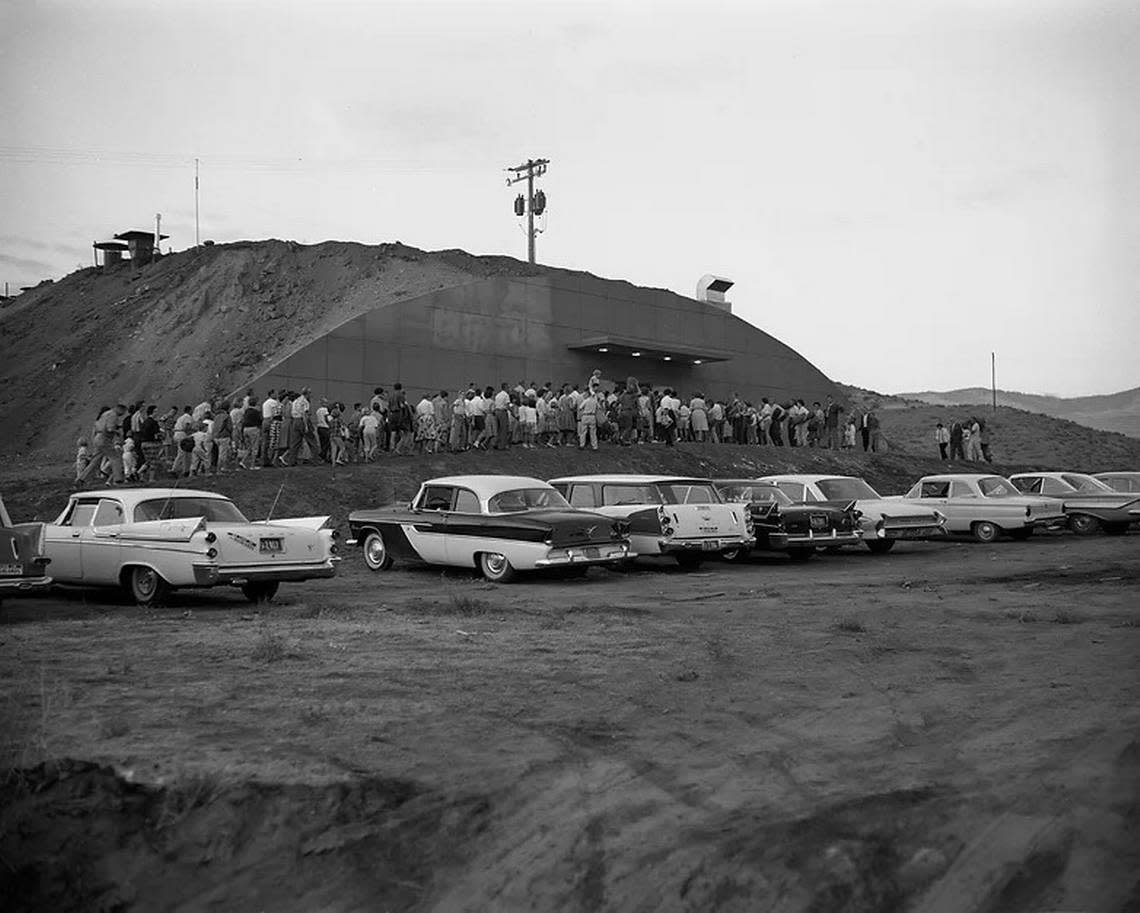
Controversially, it was large enough to shelter only 1,000 people. Residents of the expensive Highlands area paid $100 each to hold on to the slim hope that they wouldn’t die in a war.
Paying members didn’t take this privilege lightly. In the event of a nuclear attack, they planned to protect their means of survival through force.
“We mean business when we say this shelter is for members only,” said member Glenn Buettner, according to the Idaho Architecture Project. “We’ll deputize 35 to 40 security guards from our membership to keep intruders out.”
The Statesman reported that Boise’s remaining 75,000 residents at the time were “sore as a boil” that federal dollars were being spent on this exclusive shelter when many of them had spent their own money to build backyard shelters.
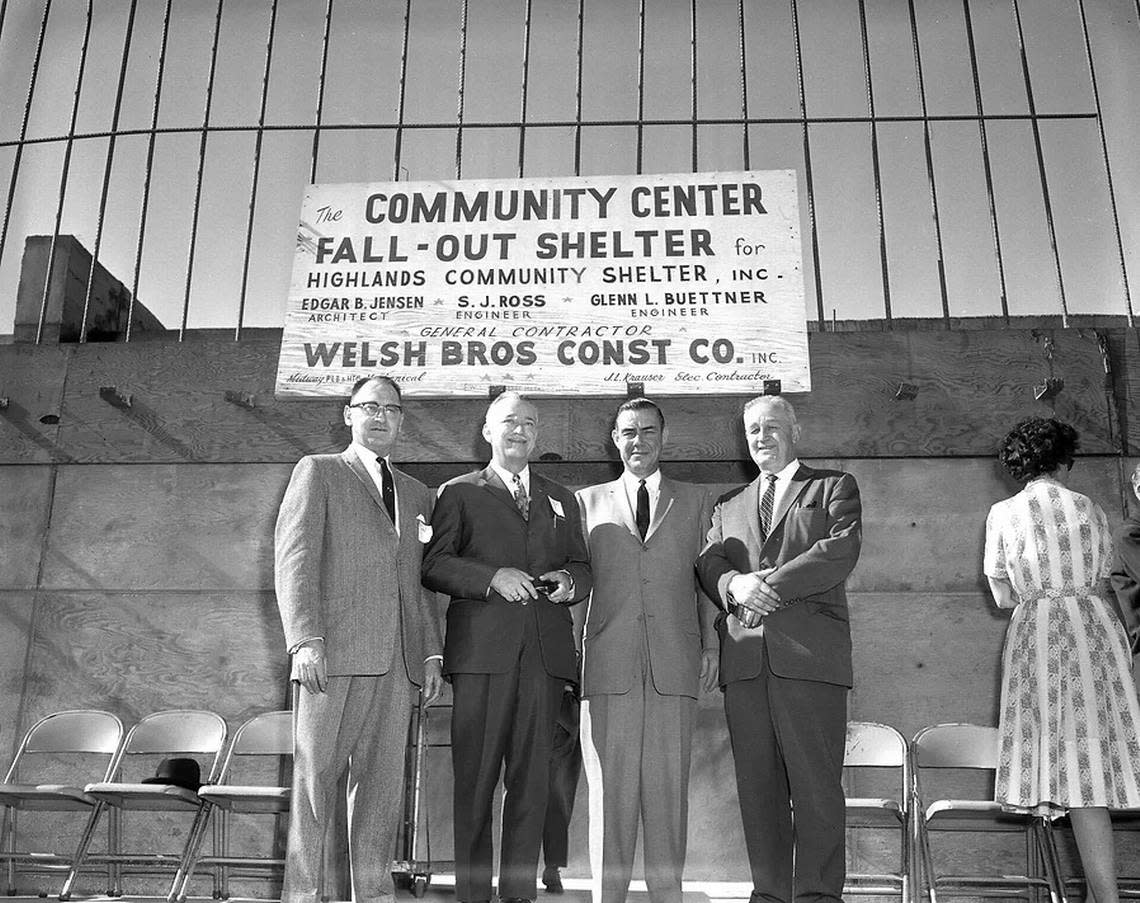
Roxann Jensen, daughter of Boise Bomb Shelter architect Edgar B. Jensen, remembered how palpable fears of nuclear war were while growing up in Boise. Now 74, she recalled a giant siren resembling a megaphone that stood near where Rhodes Skate Park exists downtown today.
“When that went off, boy, you hid under your desk, or you took shelter somewhere,” Jensen told the Statesman by phone. “I remember writing in my diary about how concerned everybody was and fearful because we just didn’t know what was going to happen.”
After the Cold War, the shelter changed hands several times. The Boise School District used it for offices and storage until Boise local John Farren bought the space to turn into music studios. He submitted plans in 2021 to build condos on top of it, but the project has not moved forward since then, according to city planning records.
Farren did not respond to the Statesman’s request for an update.
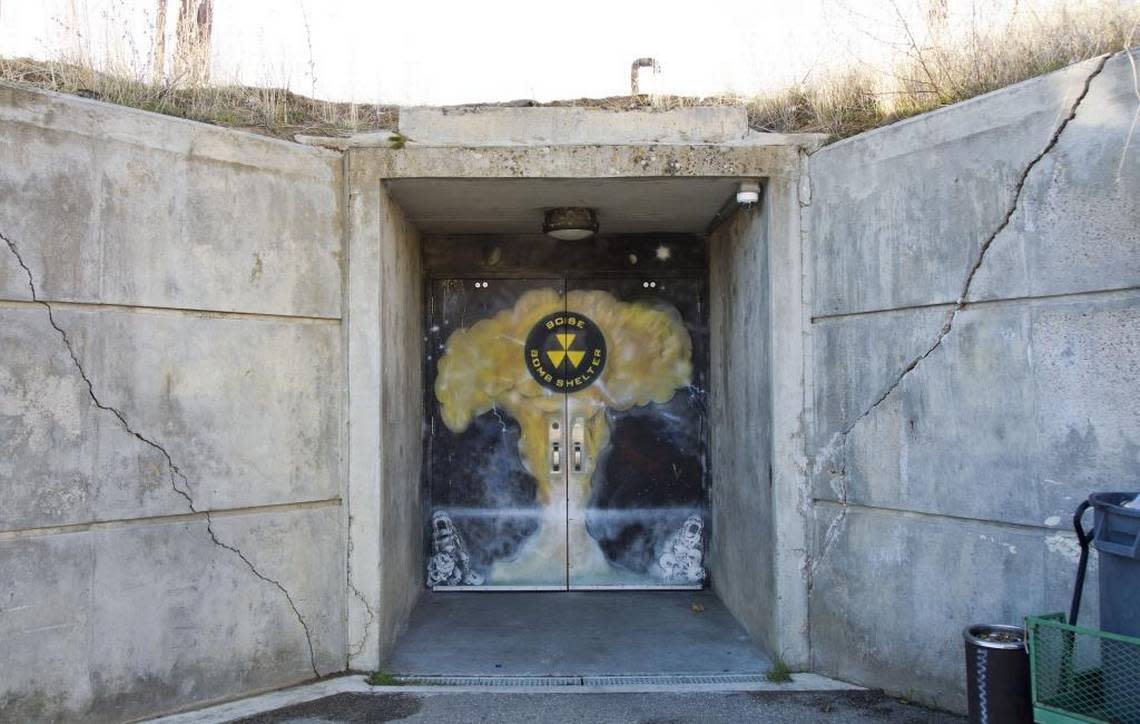
Only fatal nuclear reactor accident in U.S. history
Fears of dying at the hands of nuclear power came true in Idaho. But the source was not the Soviet Union.
On Jan. 3, 1961, Navy electrician Richard Legg, 26, and Army Spcs. John Byrnes, 22, and Richard McKinley, 27, arrived at the laboratory to restart the SL-1 reactor after it had shut down for 11 days during the holiday season, according to the INL. They were three of the many military members stationed in Idaho Falls to train and to work there.
The men needed to lift control rods to reconnect the reactor to its operating equipment as part of their assignment.
“One of the workers lifted the rod too far out of the reactor’s core, prompting SL-1 to rapidly surpass full power operation, resulting in a nearly instantaneous sequence: a fission chain reaction that generated enormous amounts of heat and a steam explosion,” an Idaho National Laboratory document states.
While salacious rumors later circulated about why the accident occurred, the prevailing theory was that the rod’s known habit of “sticking” caused the worker to push it forward with too much force, according to the laboratory.
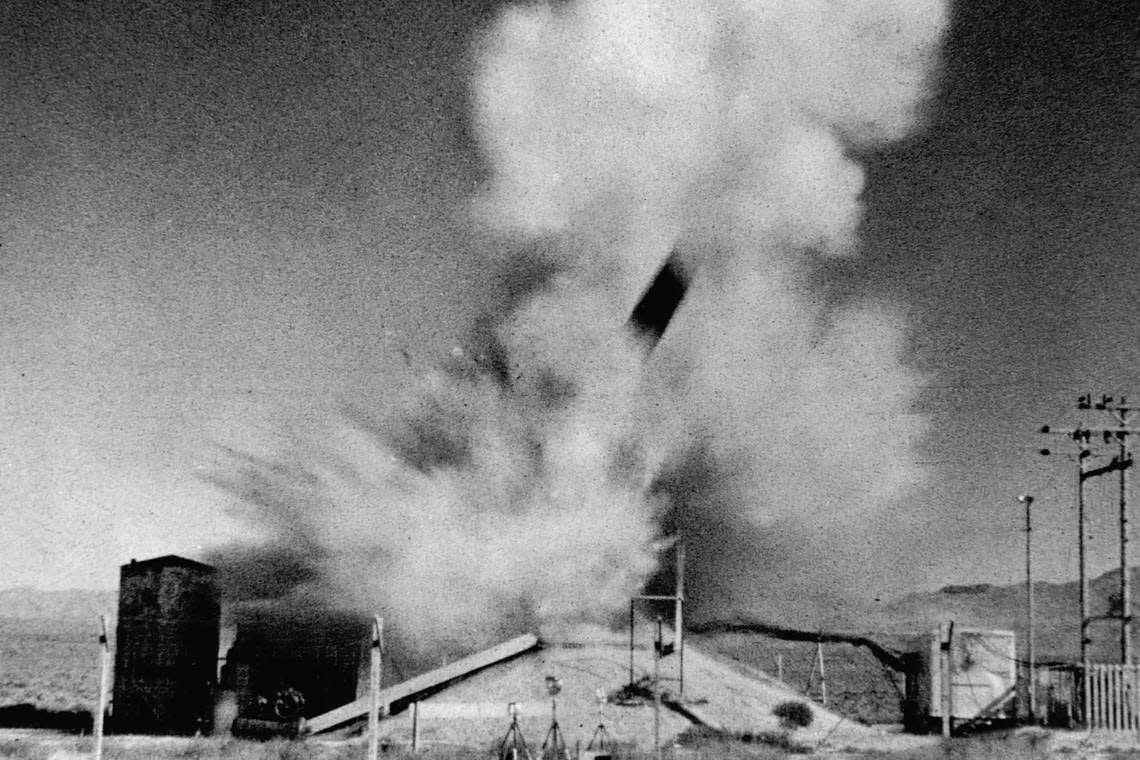
The explosion killed Legg and Byrnes instantly. Firefighters and other responders who rushed to the scene found McKinley alive. With little regard for their safety, they ran into the explosion room, put him on a stretcher and carried him to the laboratory’s ambulance, where he died a short time later.
“The authorities in Idaho had to decide what to do with a radioactive corpse,” author and former Idaho Nuclear Navy officer Todd Tucker wrote in his book “Atomic America.” “Taking him to a morgue or mortuary in Idaho Falls was out of the question. Besides being completely unequipped to deal with this kind of hazard, the drive would kill any ambulance driver.”
Eventually, a responder drove the ambulance half a mile into the desert, jumped out and sprinted away, according to “Atomic America.” It was left there for hours, corpse and all, until a team could decontaminate the vehicle.
To recover Legg’s body, which was pinned to the ceiling, rescue workers formed a chain and took turns running into the room for 65-second stints. It was all the radiation their bodies could take.
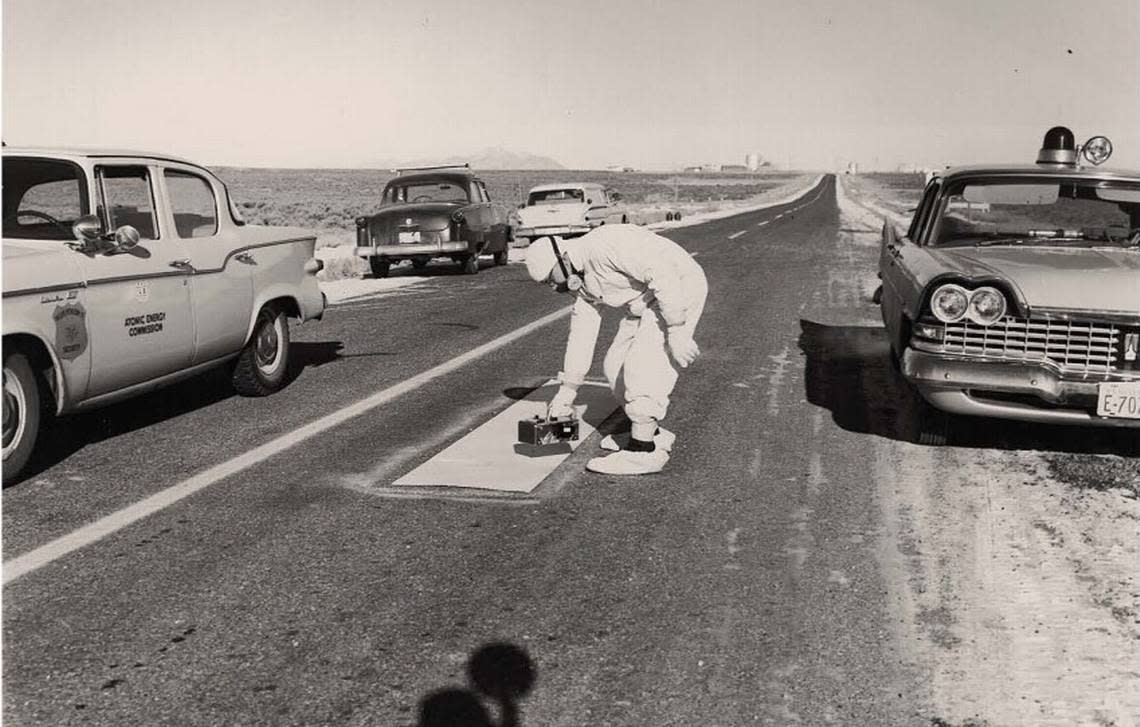
The men’s funerals were overseen by the Atomic Energy Commission and all lasted less than 10 minutes to prevent mourners from exposure to the radiation emitting from the bodies, according to Tucker’s book. Their lead-lined caskets were lowered into deep metal vaults that were then covered in 3 feet of concrete.
The grave of Legg, whose body was the most radioactive, came with an eerie warning.
“Victim of nuclear accident,” it read. “Body is contaminated with long-life radio-active isotopes. Under no circumstances will the body be moved from this location without prior approval of the Atomic Energy Commission in consultation with this headquarters.”
Altogether, 790 people were exposed to radiation from the event, which took 18 months to clean up, according to INL. The laboratory maintains that only rescue workers were affected and radiation did not reach local communities.
Contaminated debris and material were buried 8 to 15 feet into the ground. The Environmental Protection Agency conducts periodic inspections of the area to ensure its safety.
Today, little more than a fence and sign remain to mark where the accident happened.
“Sometimes when I will be driving in the desert, I’m like, ‘Oh, that’s where SL-1 was,’” Sarah Neumann, INL spokesperson, told the Statesman by phone. “The building is gone. They removed it, dug everything out, put a new cap over all that, and then it has soil and sagebrush on top of that. So it really looks like the rest of the desert. You wouldn’t know it was even there.”
Idaho’s nuclear future
Despite the accident, Idaho has continued to be a global leader of nuclear advancement in the intervening six decades.
The most significant advancements the Idaho National Laboratory is now leading are the efforts to build the world’s first nuclear microreactors. These are designed to be small enough to fit in the back of a truck and strong enough to power entire towns, some of which will run on nuclear waste, thus helping reduce that waste. They are working with a number of partners on these projects.
Nuclear experts hope these tiny reactors will be able to provide power to remote villages and disaster zones around the world.
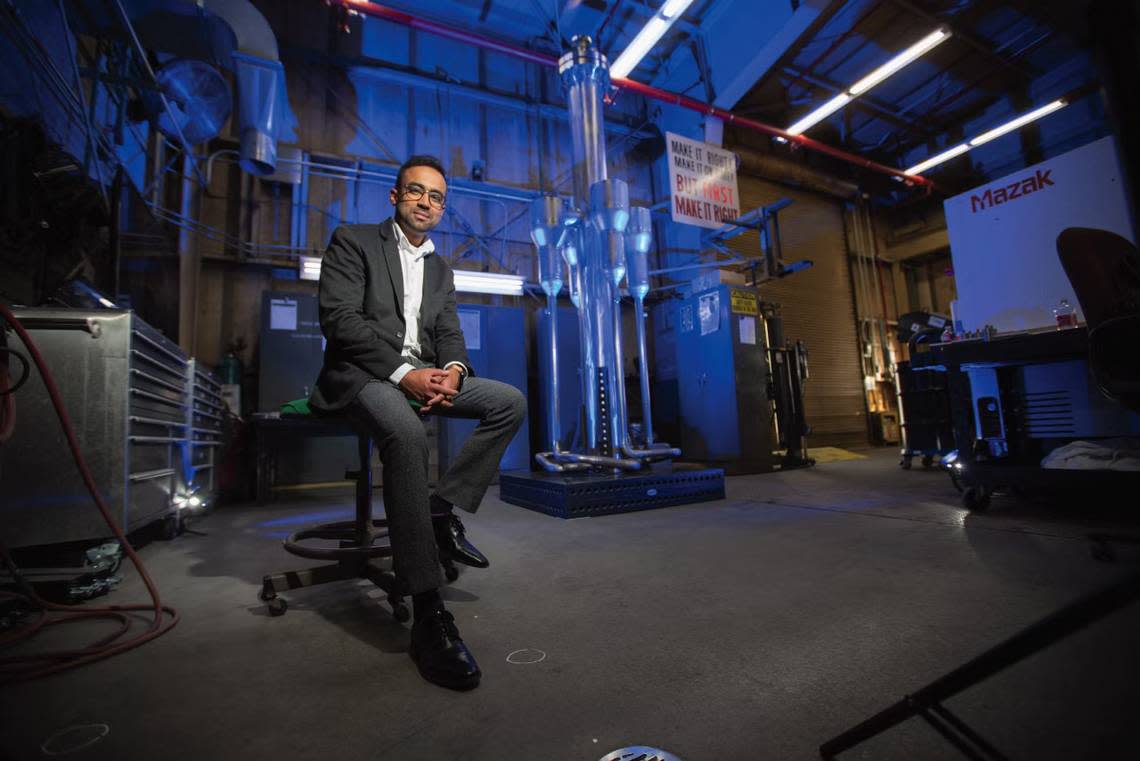
The furthest along of these is the Microreactor Applications Research Validation and Evaluation project, also known as MARVEL.
“We want to give them a nuclear reactor that is small, transportable, they can put it on the ground and it will run for five, 10, or 20 years, depending on the design,” Yasir Arafat, project lead for the MARVEL reactor, told Power magazine. “We’re going to be making this microreactor so safe, so benign, but also economically feasible, that it can be widespread around not just the U.S., but around the world.”
MARVEL will be the first new test reactor at Idaho National Laboratory in more than 40 years, according to the Department of Energy. It is expected to begin operating at an Idaho testing facility by the end of 2024.
If that succeeds, Idaho will once again make history, and experts around the world will look to the Gem State as the heart of a potential nuclear future, just as they have before.
“Every commercial nuclear reactor across the globe owes something to the work that was done here in Idaho,” Neumann said.
